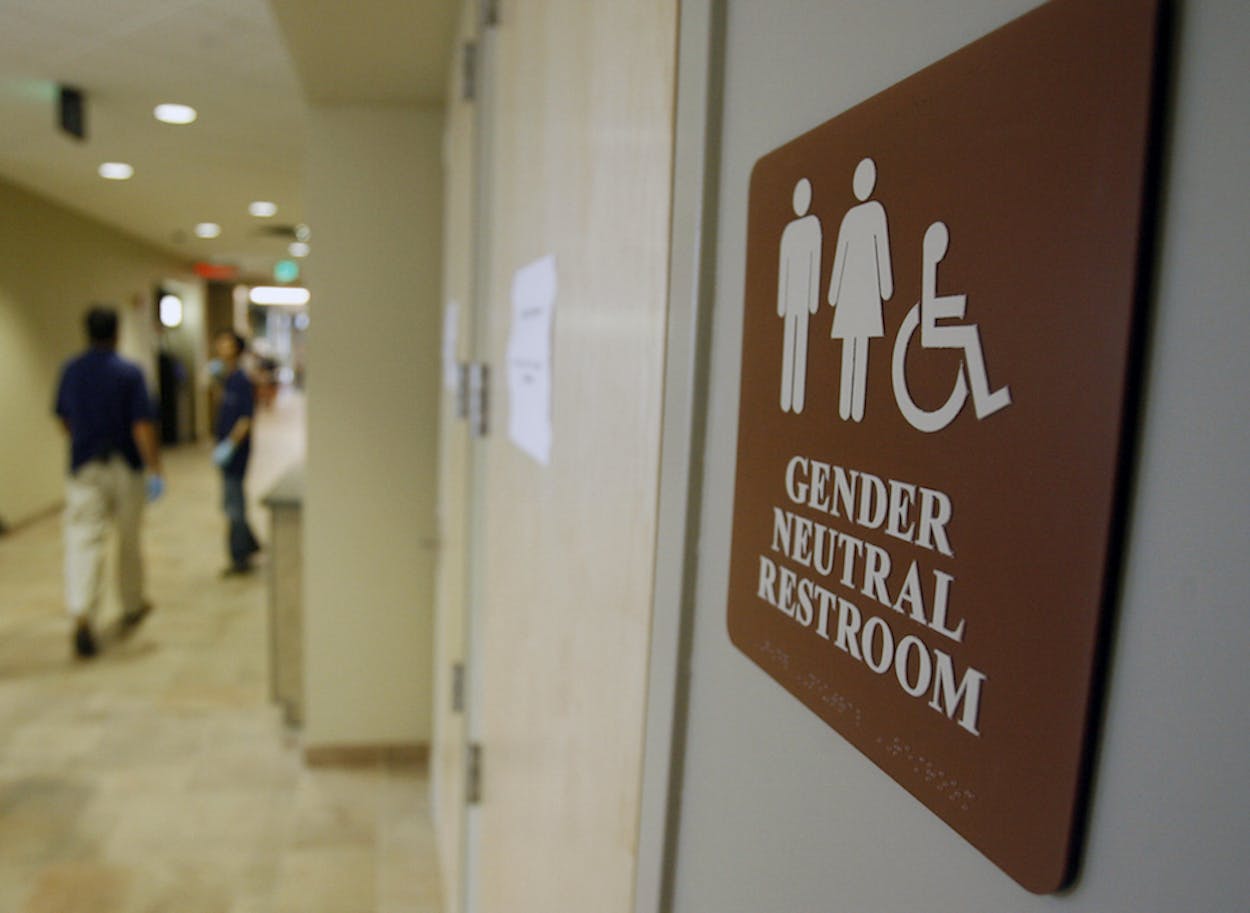There are plenty of narratives about what it’s like to be transgender in Texas. (Francesca Mari’s Texas Monthly profile of Colt Keo-Meier is a good one; Houston blogger Monica Roberts’ TransGriot is another.) And though those personal stories are vital to getting to know a segment of the population that’s often misunderstood, it’s also instructive to have data to illuminate the ways in which those stories do (or don’t) represent the larger whole.
To that end, the U.S. Transgender Survey interviewed 27,000 Americans—including 1,490 Texans—and the information contained in that report (provided by Equality Texas) is a useful, broad look at the common experiences of transgender people in Texas. It’s also a look at some staggering numbers for a population that’s extremely vulnerable in a few different ways. Here are some of the bullet points with some more context from the report added:
- 34 percent of transgender Texans live below the poverty line.
As a whole, more Texans live in poverty than people in most other states—we’re thirty-eighth on that list, with 17.2 percent of the population living below the poverty line. But transgender Texans double that rate, with 34 percent of that population living in poverty.
The reasons for that become clearer as you read some of the other data in the report: 29 percent of transgender Texans reported that, in the past year, they’d been fired, denied a promotion, harassed, or otherwise mistreated by an employer as a result of their gender identity. And the opportunities to get a good job are limited, especially for trans Texans who came out when they were younger. Nearly half of transgender Texans reported being verbally harassed in school (K-12); a quarter of them were physically attacked; and 17 percent reported being sexually assaulted. As a result, 14 percent of transgender Texans reported leaving school because of the way they were treated.
The unemployment rate in Texas is around 4.7 percent, but it’s significantly higher among transgender Texans—according to the survey, 17 percent of those 1,490 people who responded were unemployed. Given that 15 percent of transgender Texans say that they’ve been fired from a job simply for being transgender, it’s easy to see how that rate gets so high.
- Homelessness is rampant among transgender Texans.
Homelessness is tough to accurately measure, so recent statistics about how many people experience homelessness in their lifetimes are difficult to come by. A 1994 survey, though, found that 14 percent of Americans experience homelessness at some point in their lifetime. Among transgender Texans, though, that number is significantly higher: 30 percent of respondents reported that they’d been homeless at some point in their lives.
The connection between homelessness and poverty is clear, but it’s also not the only explanation. Of the people who responded to the survey, 22 percent said that they’d experienced housing discrimination in the past year—being denied a lease on an apartment, being evicted, or being unable to renew a lease because they were transgender. (As a result, in addition to the lifetime figure, 12 percent of respondents said that they experienced homelessness in the past year.) And shelters aren’t necessarily a safe place for transgender Texans—30 percent of the people who said that they’d been homeless in the past year also explained that they didn’t stay in a shelter because they feared harassment or mistreatment.
- Bathrooms are already difficult places for transgender Texans.
SB 6, the bill that would require that government buildings, public schools, and public universities to restrict bathroom access to the sex listed on a person’s birth certificate, has received its fair share of headlines since being introduced earlier this month. But even without a law in place to tell transgender Texans which bathroom they’re allowed to enter, it’s already an difficult issue. Nine percent of people who responded to the survey said that they were physically denied access to a bathroom in the past year, 10 percent said that they were verbally harassed when using the bathroom, and 1 percent each said that they were either physically or sexually assaulted in a bathroom that year.
As a result, making a decision about whether or not to go in public is a heavy question: 61 percent of transgender Texans surveyed say that they try to avoid using public restrooms altogether, and 36 percent of them say that they limit how much they eat and drink when they’re out in order to avoid the need in the first place. The survey doesn’t break down respondents by region, so it’s unclear if those numbers change at all in a city like Austin, which—unless it’s overturned by one of the provisions in SB 6—requires all businesses with single-occupant bathrooms to be gender-neutral.
The challenges that transgender Texans face in public aren’t restricted to bathrooms, either. Nearly a quarter of the people who responded said that they’d been mistreated at a public place—a business, hotel, or government office—either because they were harassed, denied service, or even physically attacked.
When that happens, transgender Texans don’t tend to feel safe seeking help from authorities, either. A whopping 60 percent of respondents said that, when interacting with law enforcement officers who recognized that they were transgender, they were mistreated. (According to the survey, that mistreatment includes harassment, being referred to repeatedly by the wrong gender, and physical or sexual assault.) Additionally, 60 percent of the people who responded to the survey said that they’re uncomfortable calling the police when they need help.
Those are a lot of sobering statistics about a population that could be further affected by the state legislature. When it comes to determining if another challenge will be placed in the path of transgender Texans, we’ll have to see what the legislature decides to do.








